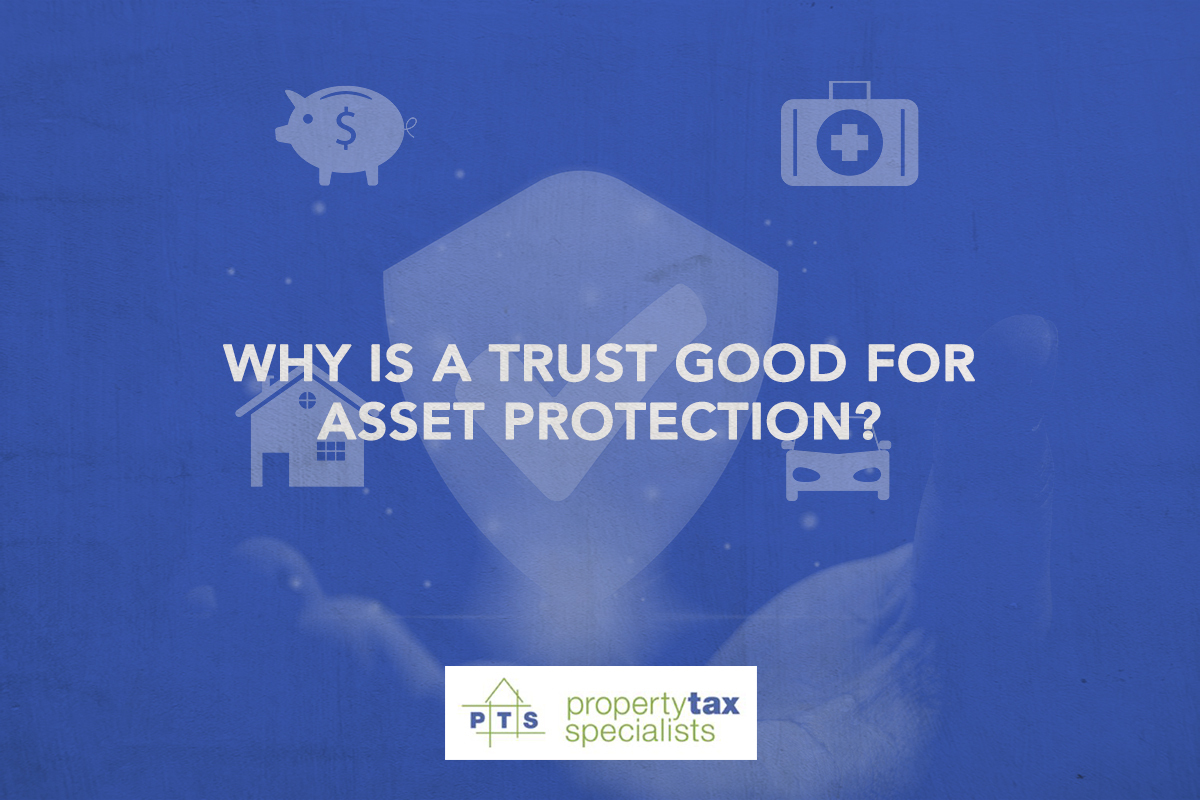Should You Use an Asset Protection Trust?
In many minds, property investment is a rewarding journey characterised by attractive prospects for capital growth and rental income. We visualise an appreciating asset, steady income, and a robust portfolio that fuels our financial goals.
Yet, what’s often less talked about—but equally essential—is the aspect of asset protection.
Capital growth and rental yields undoubtedly form the cornerstones of a rewarding property investment journey. But the pursuit of these goals isn’t without its risks. Economic downturns, litigation, personal debts, or business failures are unforeseen events that can pose significant threats to your investments.
If a lawsuit or bankruptcy enters the scene, for example, your properties could be seized to settle the claims. This is where the concept of asset protection becomes key.
Asset protection strategies are about implementing measures to insulate your properties from potential risks. It’s about creating a protective shield around your investments, ensuring they remain safe and intact for you and your future generations.
Now the question is, “What strategy should you use to protect your assets?”
Why Is Asset Protection an Essential Part of Any Investment Strategy?
Just as a good investment strategy helps you grow your wealth, an asset protection strategy is there to ensure it stays secure. Think of it like this: while investing is about moving forward, asset protection is about making sure you don’t slide backwards.
Whether it’s a sudden financial downturn, a personal liability, or a legal claim, having a safety net for your investments can be invaluable. It can prevent the loss of your properties or other assets and help ensure the time and money you’ve invested aren’t wasted.
Asset protection strategies help protect against frivolous and unrelated claims. Defeating creditor interests is never a reason to implement an asset protection strategy as it will not stand in court. Importantly, a well-planned asset protection strategy offers peace of mind. While no asset protection strategy is 100% secure, it means you can focus on building your portfolio, knowing your current assets are safe.
Keep in mind, though, that strategies like setting up a trust involve detailed legal processes. So getting professional advice is crucial. It’s all about making sure you understand how to protect your assets effectively while staying on the right side of the law.
Understanding Trust Structures
A trust is essentially a legal entity created to hold assets, which could include property, cash, and investments, on behalf of certain people known as beneficiaries. A trustee manages the trust and makes decisions in the best interests of the beneficiaries.
There are several types of trusts used in Australia, each with its own unique features and purposes. These include:
- Discretionary trusts: Also known as a family trust, a discretionary trust provides the trustee with the flexibility to decide how the trust’s income or capital is distributed among beneficiaries. The trustee can adjust these distributions each year, offering potential tax advantages.
- Unit trusts: In a unit trust, each beneficiary (or ‘unit holder’) has a fixed interest in the trust’s income and capital, similar to shareholders in a company. The distribution is decided based on the number of ‘units’ they hold, providing less flexibility but more predictability than discretionary trusts.
- Hybrid trusts: Hybrid trusts blend features of discretionary and unit trusts. They allow both fixed entitlements to some beneficiaries (like a unit trust) and discretionary distributions to others.
- Testamentary trusts: These trusts are established through a will and come into effect upon the death of the person who made the will. Testamentary trusts provide a high level of control over how assets are distributed to beneficiaries and can offer potential tax benefits and asset protection.
How Do Trusts Help Protect Personal Assets?
Investors often use trust structures as a robust asset protection strategy. The fundamental principle here is that assets held within a trust are legally owned by the trust, not the individuals who control or benefit from it.
As a result, these assets are generally protected from personal liabilities that the trustee or beneficiaries may face.
For example, let’s say Emma, a seasoned property investor, owns multiple properties within a discretionary trust. Unfortunately, she encounters a personal financial setback due to a failed unrelated business venture.
The creditors involved in this business failure may not be able to claim Emma’s trust-held properties because, from a legal standpoint, they’re not Emma’s personal assets. The trust owns the properties, thus offering a protective shield against such claims.
So using trusts for asset protection is essentially about compartmentalising risks. It’s a strategic move that allows investors to protect their wealth by ensuring their investment properties are insulated from personal financial risks.
However, the laws around trusts and asset protection can be complex, and the outcomes can depend on numerous factors. Therefore, obtaining expert legal and financial advice is essential when setting up a trust for asset protection purposes.
What Should You Consider Before Moving Personally Held Assets into a Trust?
If you’re thinking about moving personal assets into a trust, there are several key points to keep in mind. When you transfer assets into a trust, whether they’re business assets, shares in companies, or investment properties, the trust becomes the legal owner.
So while you might control the trust, you no longer own these assets personally.
This new ownership means the trust will have its own creditors because it’s a separate legal entity. If your trust holds a property mortgage or a business investment loan, the lenders are the trust’s creditors. They can make claims against the trust’s assets if it fails to meet its financial obligations.
Also, moving assets into a trust can come with considerable costs. Transferring assets can trigger stamp duty, a tax that can be significant depending on the type of asset and where it’s located.
Plus, you’ll likely face capital gains tax (CGT) issues. The Australian Tax Office typically views moving assets into a trust as if you’ve sold them at their market value. If the market value is more than what you paid for the asset, you could have a capital gain, which might be taxable.
So, trusts can be a smart way to protect assets, but they come with new considerations and potential costs. You should seek professional advice from an asset protection specialist to fully understand these points and decide whether a trust structure is the right choice for your investment strategy.
What Else Should You Keep In Mind?
If you’re just starting your investment journey and thinking about setting up a trust before you acquire any assets, there’s more to consider. Beyond the fact that you won’t be the legal owner of your assets, trusts also come with their own set of rules and responsibilities.
Trusts require a formal structure involving a trust deed and trustee appointments.. They also demand proper record-keeping and separate tax returns. Not complying with these responsibilities could lead to significant legal and financial consequences.
Aside from that, setting up and running a trust involves costs that don’t necessarily apply to personal ownership. These include establishment costs, ongoing management fees, and accounting fees for the trust’s separate tax returns.
While these costs can be balanced against the benefits of protecting assets, potential tax advantages, and estate planning, it’s crucial to factor them into your decision-making process.
Key Takeaways
Navigating the world of property investment involves much more than simply purchasing properties and waiting for them to appreciate. Protecting your investments with robust strategies is equally essential, and that’s where understanding and implementing the right trust structures come into play.
Trusts, while complex, can offer significant advantages for protecting your assets. However, they require careful planning and expert guidance to ensure they align with your unique circumstances and investment goals.
You must consider all factors involved, from legal ownership and creditor rights to tax implications and ongoing costs.
At Property Tax Specialists, we’re here to help you make sense of it all. Our team of experts can guide you through the process, helping you build a solid asset protection strategy tailored to your needs. We aim to empower you with the knowledge and tools necessary to protect and grow your investment portfolio effectively.
Contact Property Tax Specialists today to start developing your personalised strategy.
Disclaimer
Please note that every effort has been made to ensure that the information provided in this guide is accurate. You should note, however, that the information is intended as a guide only, providing an overview of general information available to property buyers and investors. This guide is not intended to be an exhaustive source of information and should not be seen to constitute legal, tax or investment advice. You should, where necessary, seek your own advice for any legal, tax or investment issues raised in your affairs.





